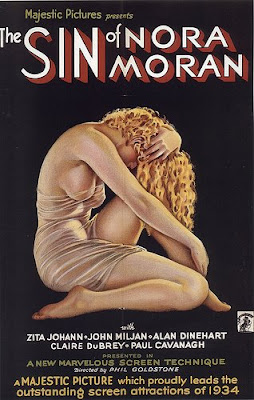2:00 PM Vigilante (1983) - Gangs Vs. Robert Forster
4:00 PM Raw Force (1982) - Krazy Kung-Fu Cannibals!
6:00 PM Escape From New York (1981) - John Carpenter
8:00 PM Lady Terminator (1988) - Explicit Nudity & Explosions
§§§
Quoting Jesse Hawthorne Ficks,
We kick off...with Robert Forster (Alligator) delivering yet another genuinely incredible performance as a troubled blue-collar schmo pushed to the brink of human endurance. When he finally lashes out, no lowlife is spared from his four-wheeled, double-barreled, white-knuckled wrath. Warning: Don’t come cryin’ to me after you've been traumatized by this little "roughie". If you can’t enjoy watching a 4-year-old kid take a point blank shotgun blast, that’s your problem. Preceded by some ruthless trailers including Savage Streets, Ms. 45 and Death Wish 3! Widescreen 35mm print. 90min.
This [Raw Force] jungle, nazi, kung-fu, zombie-fest has more blow-torches a'blazin, teeth a'flyin, bullets a'zingin and cages full-o'-virgins , that you'll have to blink every 3 seconds just to keep your eyes from catching on fire! The infamous Cameron Mitchell semi-stars in this Filipino & American co-production that would have brought the world to its knees if... anyone had ever seen it. [Preceded] by a bunch of films you won't believe were ever made! Original 35mm print. 86min.
The year is 1997 A.D. Cold-blooded criminal Snake Pliskin has 24 hours to enter the lawless, bloodthirsty prison island known as "Manhattan" & rescue the nation’s president (Donald Pleasance) from the clutches of a crazed gang leader played by the late, great Isaac Hayes! Simply, one of the best 1980s sci-fi film. Preceded by some of your favorite John Caprenter trailers! This Widescreen film is an EXTREMELY RARE print [of Escape From New York] that actually has color left (opposed to the only other print that has been making the rep-house circuit recently). Don't miss this! 99min.
This [Lady Terminator] late-80s Filipino/Indonesian Terminator knock-off has the magical ability to forego all logic in it's relentless drive for maximum entertainment. Starting with a man stealing a snake from a sex-witch’s vagina, the she-devil threatens to exact revenge on his great-great granddaughter. Cut-to 100 years later, a female scuba-diving anthropologist is violated by the same naughty snake, causing her to go on a kill-crazy rampage culminating in her favorite non-firearm method of execution... a hearty chomp from her carnivorous vagina! Be ready for the walls of the Castro Theatre to fall during this utterly unknown spectacle. Preceded by more robust robot trailers including Robotrix, I Come in Peace, Cyborg and Eve of Destruction. 35mm print. 82min. You will never forget this day. I promise!
§§§
This program is co-presented by the Alamo Drafthouse in Austin. However, the day before the Castro date (April 18), Alamo Drafthouse is presenting Cinemapocalypse at the Yerba Buena Center for the Arts (YBCA).
The program consists of a double feature.
Mister Scarface directed by Fernando Di Leo
Casual brutality alternates with vulgar comedy in one of the most entertaining Italian crime movies ever made. Jack Palance plays a bad, bad man who runs a neighborhood crime syndicate in Rome. But when a series of small outrages escalates to an all-out war he proves no match for a couple of slacker kids with a dune buggy and an over-the-hill consigliere. Pulp art at its very best. (1976, 85 min, 35mm)
Chained Heat directed by Paul Nicolas
The best women-in-prison movie in the history of the world. Spend an hour and a half locked in a squalid cage with a few dozen sweaty bad girls. This is pure women-in-prison exploitation with all the catfights, steamy shower scenes and deviant sexuality you can handle. Linda Blair plays the new fish on the cellblock, and the film also stars the ubiquitous '80s Amazon Sybil Danning and Cleopatra Jones star Tamara Dobson as warring inmates. (1983, 95 min, 35mm)
I saw Chained Heat as a teenage boy on Cinemax or HBO. It made quite an impression on me although I can't recall the film now. All those women in prison movies get conflated in my memories - Caged Heat, Chained Heat, Red Heat, Prison Heat, etc.

§§§
Eve of Destruction with Gregory Hines as an Army colonel hunting down a rogue, sexy female cyborg. I remember the trailer where Hines has a pistol aimed towards the camera as a subway train bears down behind him. The other scene I recall is the cyborg (Eve) bites off a man's penis (he's expecting fellatio). What is it with these sexploitation films? If a woman has a pulse (and sometimes not even that), a misogynist and/or rapist will put his penis in her mouth. I guess that's not that far-fetched but word of advice for the male readers - if there is one thing I've learned from the movies, it's that if you have just assaulted/raped/insulted/cheated a woman, you should keep your penis away from her mouth and/or sharp objects.
§§§
Year-to-date March 30, I've seen 99 films at an average cost of $7.96 per program. I'm not meeting my goal of $6 per film but I've skipped out on one half of some double features because I've seen the film already.













